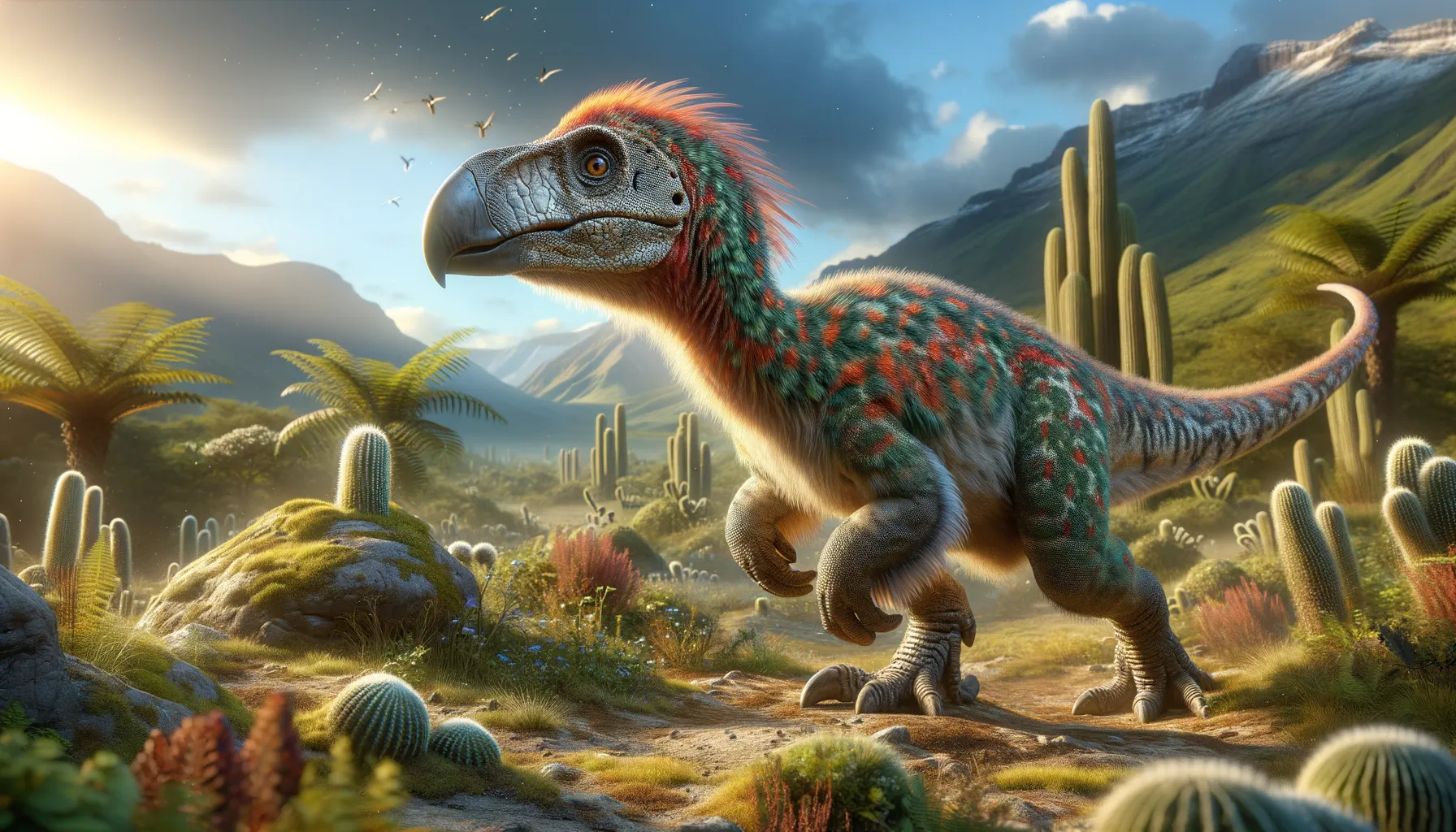
Hongshanosaurus
Small beak, big Cretaceous adventure.
Period
Cretaceous
Length
Measured approximately 1 meter long.
Height
Stood about 40 centimeters tall.
Weight
Weighed around 4 to 6 kilograms.
Hongshanosaurus was a small, herbivorous dinosaur from the Early Cretaceous period in what is now China. Characterized by its parrot-like beak and small, bipedal stature, it adapted to a plant-based diet in a diverse and competitive ecosystem. Its discovery provided crucial insights into the evolution of ceratopsian dinosaurs, offering a glimpse into the life of these creatures around 125 million years ago.
Diet
Hongshanosaurus primarily fed on soft plants, using its beak to clip leaves and stems. It likely consumed a variety of vegetation available in its habitat.
Hunting
Being a herbivore, Hongshanosaurus did not hunt but foraged for plants. It likely used its keen sense of smell to locate food sources and relied on its mobility to move between feeding grounds.
Environmental challenges
Hongshanosaurus faced challenges from larger herbivores competing for the same food sources. Predators also posed a significant threat, as small dinosaurs like Hongshanosaurus were often targets. It needed to be vigilant and quick to escape danger while foraging in the dense undergrowth of Early Cretaceous forests. Climate fluctuations also required adaptations for survival.
Speed
Likely slow-moving due to its size.
Lifespan
Estimated to live up to 20 years.
First discovery
Discovered in the Yixian Formation, China in 1997.
Fun Facts
- Hongshanosaurus is one of the earliest known ceratopsian dinosaurs, a group famous for their horned faces.
- It lived during the Early Cretaceous period, about 130 million years ago, in what is now China.
- The name 'Hongshanosaurus' means 'Red Hill Lizard,' named after the area in China where its fossils were found.
- Unlike its larger ceratopsian relatives like Triceratops, Hongshanosaurus was quite small, roughly the size of a turkey.
- Hongshanosaurus had a beak-like mouth useful for eating tough plant material, typical of plant-eating dinosaurs.
- Its fossils are important for understanding the early evolution of ceratopsians, helping to fill gaps in how these dinosaurs diversified.
- Though it didn’t have the iconic horns and frills of later ceratopsians, Hongshanosaurus provides insight into how these features might have developed.
Growth and Development
Hongshanosaurus would have hatched from eggs and undergone rapid growth in its early years to avoid predation. Juveniles likely stayed close to adults for protection and quickly learned the skills required for feeding and avoiding danger. Its growth rate decreased as it approached adulthood, requiring less energy.
Habitat
The habitat of Hongshanosaurus consisted of forested areas with abundant vegetation. These regions provided ample food sources and cover from predators. The climate was temperate to warm, supporting various plant and animal life that could sustain small herbivores.
Interaction with other species
Hongshanosaurus coexisted with numerous other dinosaurs, both herbivores, and predators. It likely traveled in small groups for increased vigilance and might have had interactions with other ceratopsians in its ecological niche. Its presence in the ecosystem formed part of the food chain, impacting both prey and predator dynamics.
Natural lifespan
In the wild, this dinosaur's lifespan was likely around 20 years.
Reproduction
Reproduction involved laying eggs, which were incubated in nests until hatching. Mating and nesting behavior might have been driven by seasonal cycles, with care likely involved until offspring could forage independently.
Social behaviour
Hongshanosaurus may have lived in small groups to protect against predators and increase foraging efficiency. Social structures would help in passing knowledge to younger generations, ensuring survival through learned behaviors.
Fossil locations
Fossils of Hongshanosaurus have been primarily found in the Yixian Formation of China. These fossil beds are significant for providing well-preserved specimens, giving insight into the diverse prehistoric ecosystem it inhabited.
